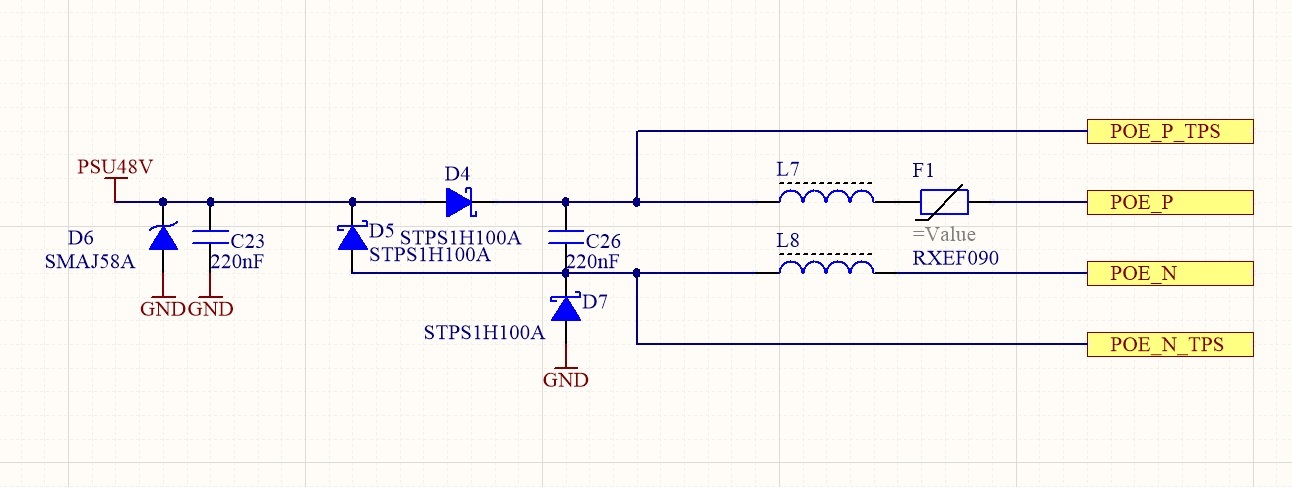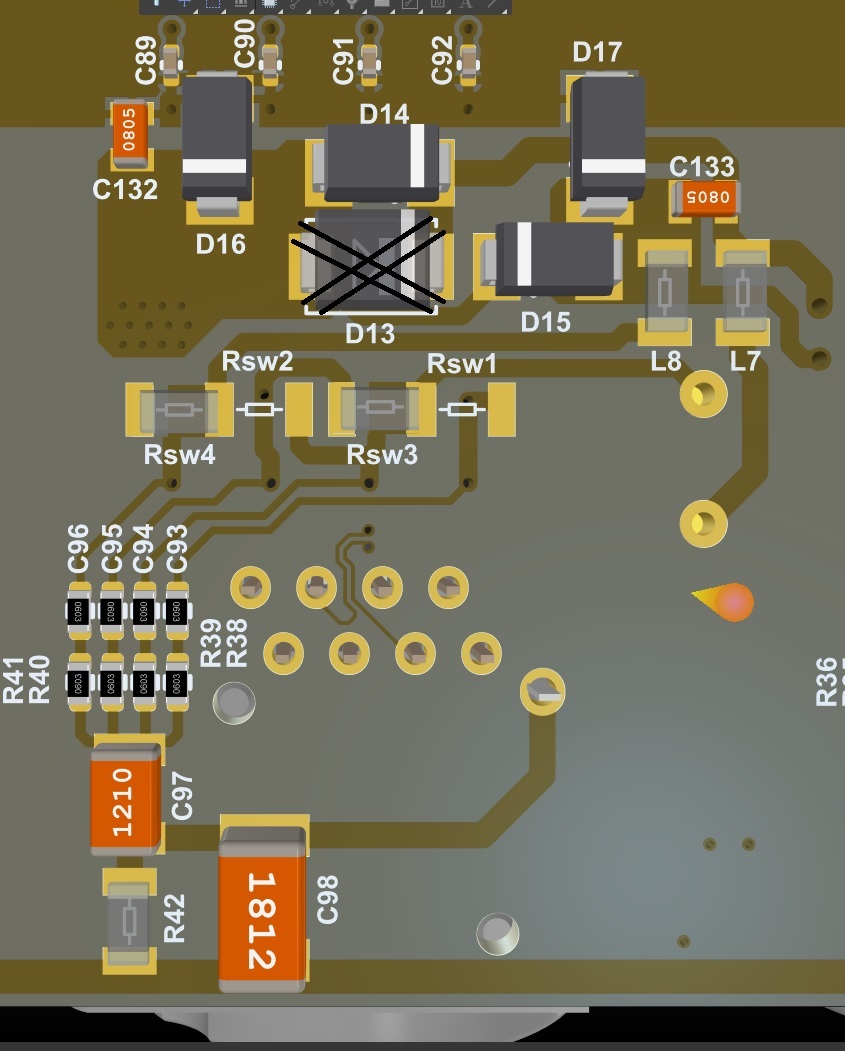Hi.
We are developing switches with PoE capabilities.
We implemented PoE protection scheme from TI SLVA233A application note.
Below you can see images of schematics regarding protection and bob smith termination, and PCB.
Problem is that, we have encountered cases where TPS2384 ports have short circuit - the integrated MOSFET is shorted and it is dangerous for any non-PoE application to be connected to our device.
There have also been cases when TPS2384 port is dead - it won't turn on at all.
I am still investigating the circuit board.
1. Can you please advise what could be improved?
2. Is it important that bulk capacitance(in app note case it is 220uF) is close to the port?
Some component specs:
C23, C26 - 08051C224KAT2A 'CAP 220nF ±10% 100V X7R -55÷125°C 0805
L7, L8 - 2512066017Y1 , 1A 600 Ohm @ 100MHz ( as recommended by application note)
F1- Resettable fuse PPTC 1.8A/72V RXEF090 , Littelfuse
All other component part numbers are seen in image. TVS and schottky diodes are exactly same as recommended in TI app note.







